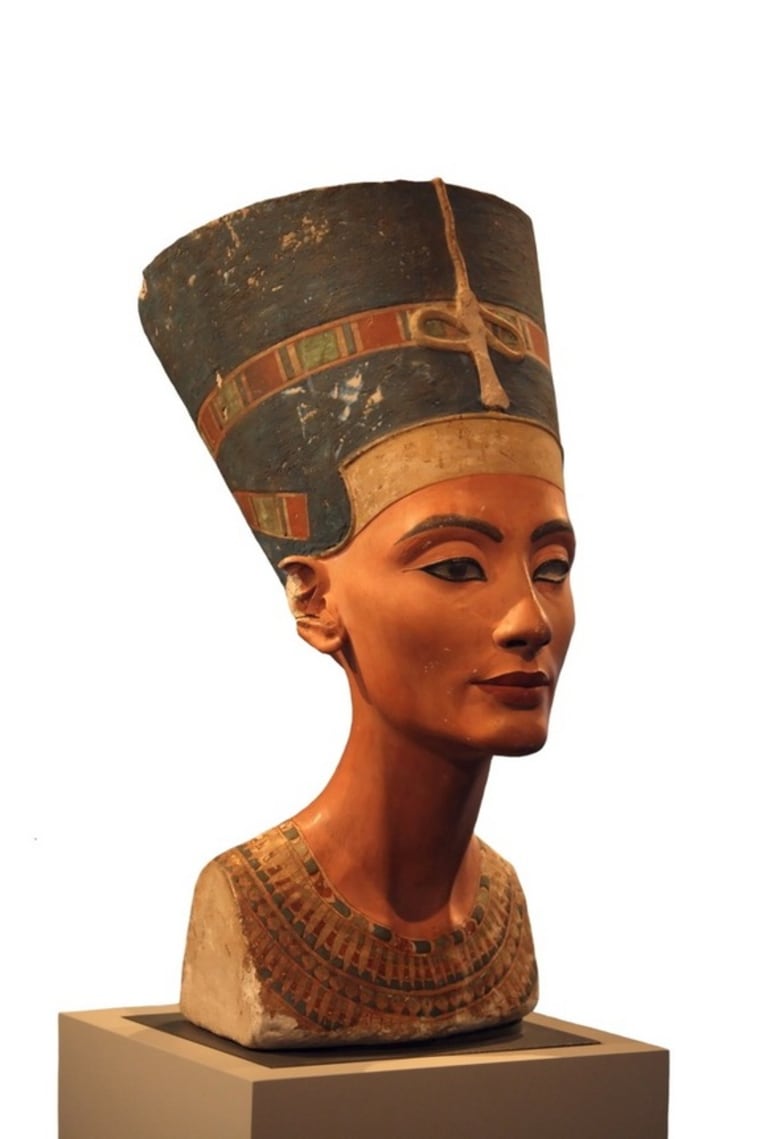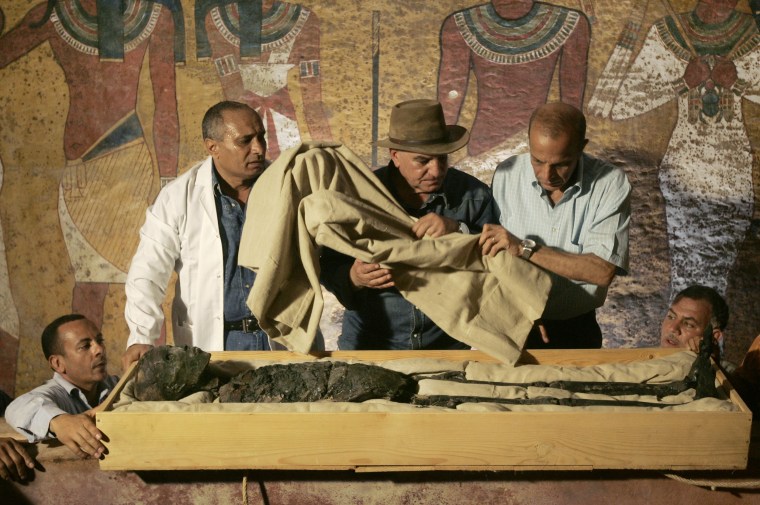The burial chamber of King Tut has revealed many secrets over the years, but there may be a whopper yet to discover: the tomb of his mother, Queen Nefertiti.
A scan of the wall texture in King Tutankhamun's tomb reveals indentations or faint lines, which could suggest two hidden doors. Based on other aspects of the tomb's geometry, it's possible that Nefertiti is hiding behind the door, said Nicholas Reeves, an archaeologist at the University of Arizona who has proposed the theory of Queen Nefertiti's secret tomb.
If Nefertiti's tomb indeed lies undisturbed behind the wall, that would be big news.
"We could be faced for the first time in recent history with the intact burial of an Egyptian pharaoh in the Valley of the Kings," Reeves told Live Science. "Goodness knows what that will tell us." [In Photos: The Life and Death of King Tut]
However, other Egyptologists are skeptical, because the scratches on the wall are the sole indications of the queen's burial.

King Tutankhamun (also spelled Tutankhamen), often dubbed the boy king, was an Egyptian pharaoh who rose to power in 1333 B.C., at the tender age of 10. His mother was Queen Nefertiti, and his father was Akhenaten. He died at age 20, possibly of malaria or bone abnormalities, and his rule could have been a footnote in Egyptian history if not for one thing: His gold-bedecked, opulently appointed tomb was discovered, mostly intact, by British archaeologist Howard Carter in 1922.
The boy king was buried in haste; bacterial traces suggest the paint had not even dried before he was sealed into the place. And his tomb is smaller than others in the Valley of the Kings, leading many experts to believe that his death was unexpected, and so his underlings had to scramble and put him in a makeshift tomb originally intended for someone else, Reeves said. [See Gorgeous Images of Egypt's Valley of the Kings]
Over the years, throngs of tourists had damaged the tomb, so the Egyptian government commissioned a replica of King Tut's tomb for tourists to visit. As part of that process, the reconstruction company Factum Arte took photographs and created scans of the wall's textural surface.
Reeves was studying these scans when he noticed strange "echoes of features" beneath the plaster walls inside King Tut's tomb. He noticed vertical lines on the west wall of the tomb. When he measured the dimensions of these lines, they corresponded to the dimensions of an existing doorway in a nearby wall. He speculated that someone had plastered over a hidden doorway in antiquity.

The layout of the tomb also suggested there should be a chamber at that spot. Another wall also had faint lines suggestive of another hidden doorway and wall partition.
In addition, Tutankhamun's tomb is smaller than others in the Valley of the Kings, and to get to the chamber, one must turn right from the main corridor — a configuration typically used for Egyptian queens, not kings, whose chambers were off to the left, Reeves said.
Related: Close Shave: King Tut's Beard Glued Back on With Epoxy
"I think Tutankhamun's tomb started off as the tomb of a queen, and that Tutankhamun was buried only later and buried in the outer part of the tomb," Reeves said. The outer part of the tomb was quickly enlarged to make it a proper royal burial that could house the nest of shrines that was due to a pharaoh.
The real centerpiece tomb — that of Nefertiti — was never discovered because it was hidden by a "blind," or a painted wall, he speculated.
This is a condensed version of a report from Live Science. Read the full report. Follow Tia Ghose on Twitter and Google+. Follow Live Science @livescience, Facebook & Google+. Original article on Live Science.
More from Live Science
- Image Gallery: Egypt's Great Terrace of God
- Photos: 1,700-Year-Old Egyptian Mummy Revealed
- Image Gallery: The Faces of Egyptian Mummies Revealed
Copyright 2015 LiveScience, a Purch company. All rights reserved. This material may not be published, broadcast, rewritten or redistributed.